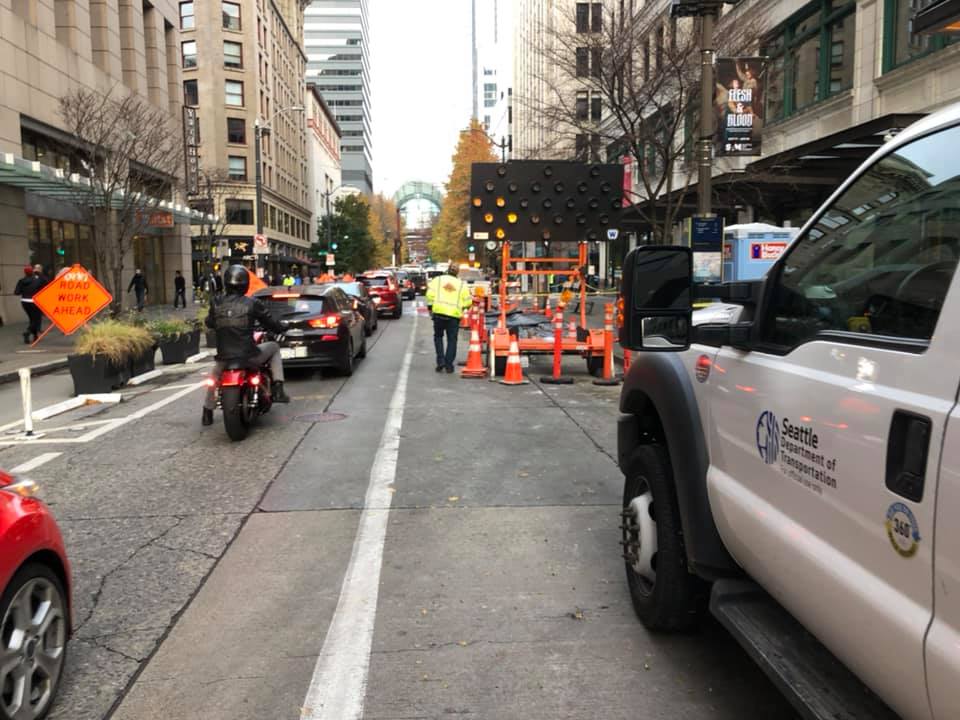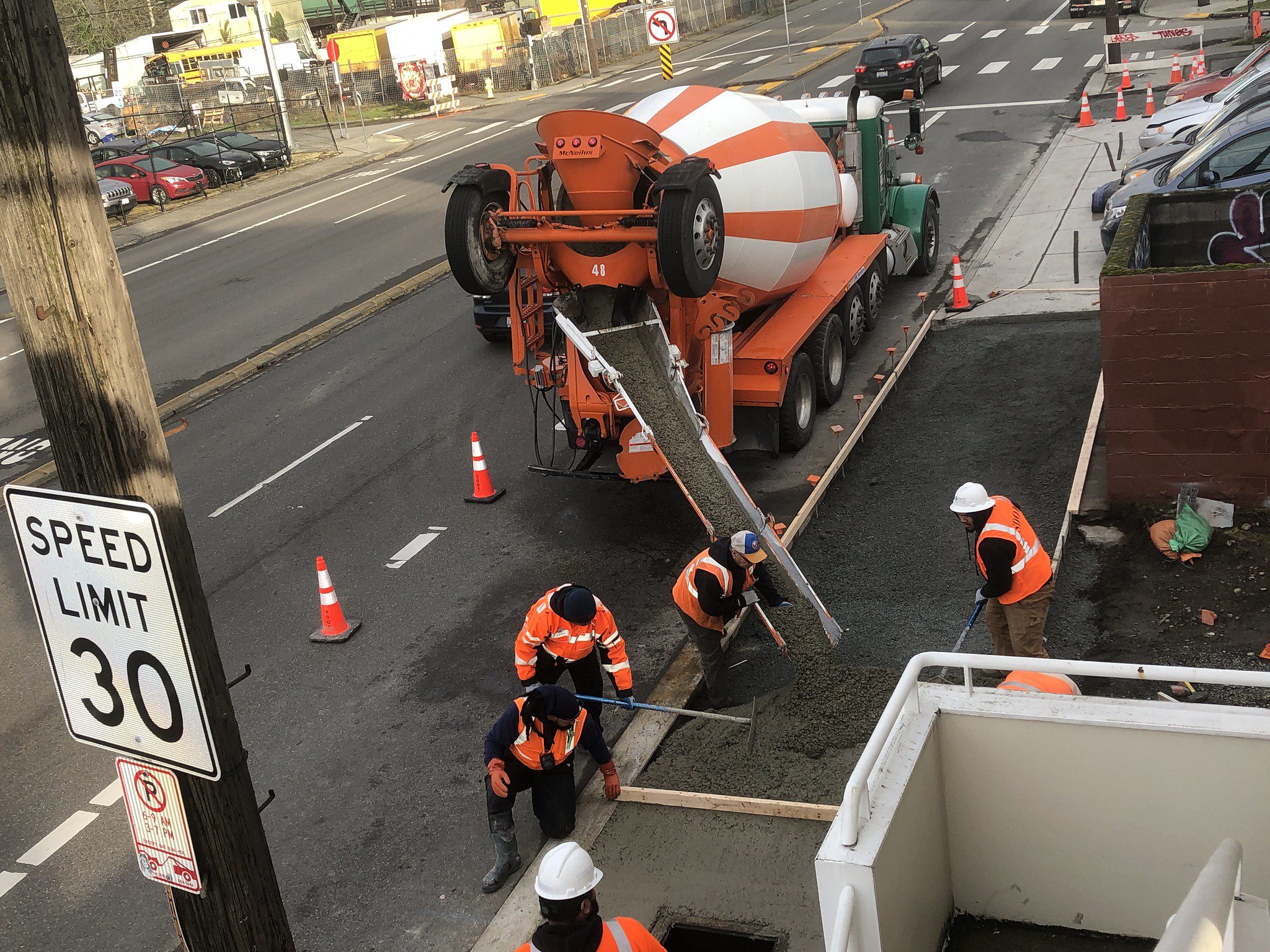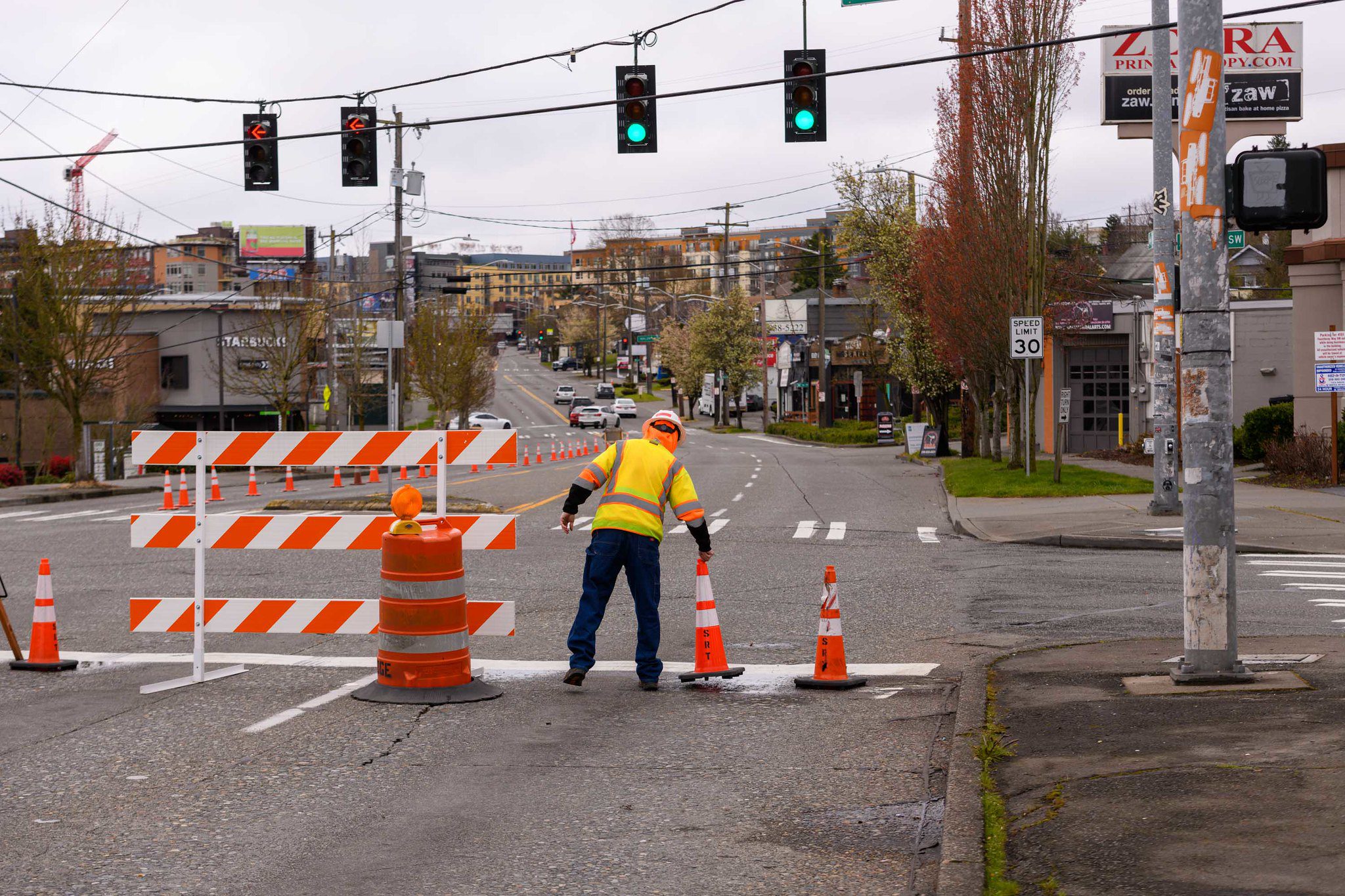 SDOT crews working next to traffic on 4th and Pike in downtown Seattle. Photo: SDOT
SDOT crews working next to traffic on 4th and Pike in downtown Seattle. Photo: SDOT Blog stats: 1,100 words | 7-minute read
At-a-Glance:
- April 17-21 is National Work Zone Awareness Week.
- We all have an important role to keep people working in the street and construction zones safe.
- In this blog, you’ll find safety tips and important reminders for traveling through work zones.
This week, April 17-21, is National Work Zone Awareness Week, an annual campaign to encourage safe travel through work zones. Please join us by doing your part to help keep workers in our public right-of-way safe every day.
Safety is a priority for everyone here at SDOT throughout the year. We participate in National Work Zone Awareness Week each spring to share important reminders with Seattleites on traveling through work zones safely, especially leading up to the busy summer construction season.
Our team members work daily in marked zones across the city’s streets to keep them safe and clear of obstructions. Our partners at Seattle City Light, Seattle Public Utilities, and other City departments also work regularly in and around the streets to help ensure we have reliable power, clean water, and other essential services in our homes and businesses. For everything our dedicated professionals do to keep Seattle running smoothly, we ask you to help keep them safe while traveling through work zones.
According to the Washington State Department of Transportation (WSDOT), an average of nearly 626 highway work zone injuries occur annually in Washington State. Drivers and their passengers make up almost 95 percent of people injured or killed in work zone collisions.

We all have a role to play in work zone safety. Work zone crashes can be reduced by eliminating the top three causes of work zone crashes: following too closely, speeding, and distracted driving. Staying attentive and following careful practices can keep both drivers and workers safe.
When approaching and driving through work zones, please remember to:
- Be prepared. Before you head out to drive, please check for the latest traffic information by visiting our Seattle travelers information page or using services like Google Maps. When you know where active work zones are located, you can better plan ahead for your trip. If needed, you may be able to adjust your trip’s timing, or if possible, find alternate routes to avoid work zones altogether.
- Stay focused and do not drive distracted. As always, put your phone away and watch the street. In 2021, the number of fatal crashes across the nation involving a distracted driver increased by 12 percent, with 3,522 people losing their lives in the collision. Work sites can change daily – please pay attention so you can see and follow traffic patterns. And be aware of all activities taking place around you, including other drivers and people who may be walking, biking, or rolling in the area.
- Follow all work crew instructions and read posted signs. Traffic cones, high-visibility barrels, and other warning signs help people move safely through work zones. Flaggers are there for your safety and the safety of workers on-site.
- Watch for workers. Every year, workers are killed by vehicles traveling in work zones. In 2020, 117 workers died in highway work zones across the United States, according to the U.S. Department of Labor, Bureau of Labor Statistics. Each of these workers is a person with family members, friends, and relatives who care deeply about them. We mourn this tragic loss of life across the country, as well as in our region.
- Slow down and do not tailgate. Speeding and tailgating can lead to crashes with other vehicles and with workers in the vicinity. Follow posted work zone speed limits and keep a safe distance between your car and the vehicle ahead of you.
- Share the street. When you see official vehicles with flashing warning lights, move over to allow them to pass.
- Use caution around large vehicles. Larger vehicles often require more time to react and fully stop due to their weight and momentum, so do not make sudden lane changes in front of trucks that are trying to slow down. Use your turn signals, and leave extra space when changing lanes.
- Remember, protect everyone. Be respectful of workers, fellow drivers, and all people who are walking, biking, and rolling. We need everyone to work together to ensure we are all protected in work zones. As noted earlier in this blog post, everyone on our team working in the public right-of-way deserves to get home safely to their family and friends at the end of each work day.
- Wear your seatbelt. Seatbelts save lives. They are an important line of defense in the case that a crash does occur.

On April 4, 2023, Governor Jay Inslee signed Senate Bill 5272 into law, allowing automated speed enforcement cameras to be used in work zones along state highways. When the cameras are implemented as soon as July 2024, they will be another method to keep everyone safe in work zones.
And once more, we urge you to please drive attentively. Distracted driving is deadly. When on the road, stay off your phone – it’s the law.
At SDOT, we’re advancing momentum-building actions this year to support our Vision Zero goal of ending traffic deaths and serious injuries on city streets by 2030, including:
- Phasing in additional “no turn on red” signs at downtown intersections.
- Accelerating leading pedestrian interval (LPI) rollout where existing signal systems can support it to give pedestrians more time to cross the street before drivers receive a green light.
- Partnering with Sound Transit to implement a series of improvements along Martin Luther King Jr. Way S to enhance safety for all travelers.
- Engaging the public on automated enforcement to address equity concerns about future expansion in neighborhoods with many fatalities and serious injuries.
- Elevating our City Traffic Engineer to a new Chief Safety Officer role.

